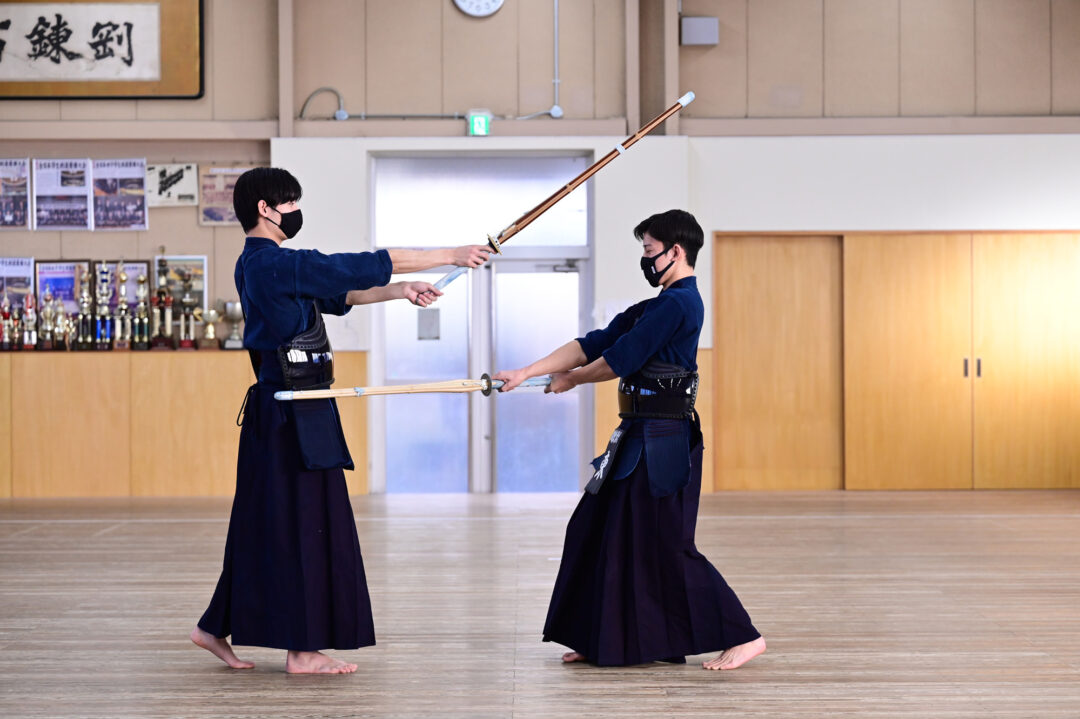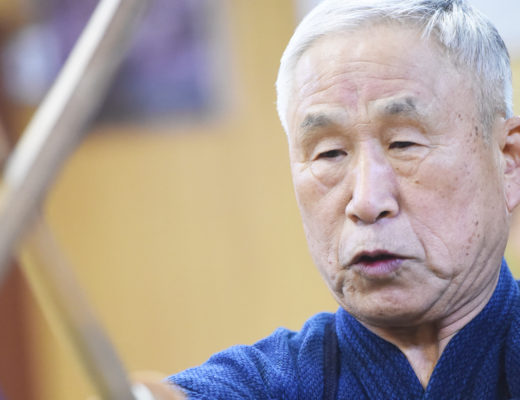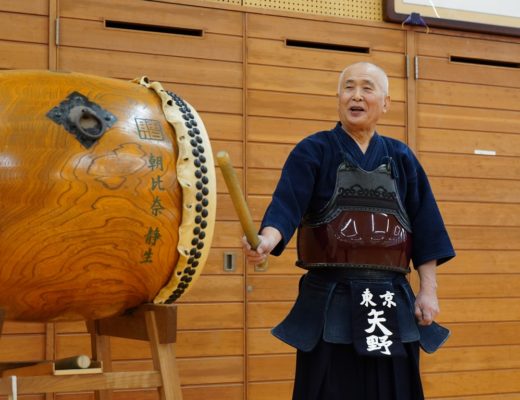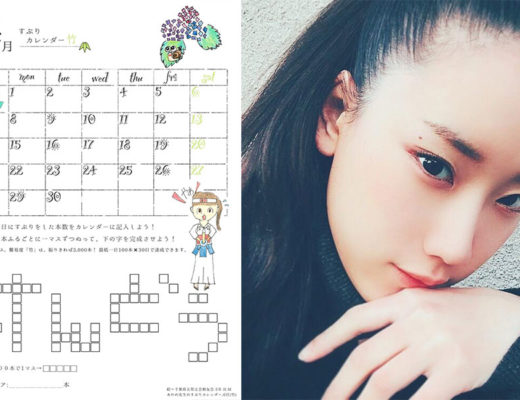2023.3 KENDOJIDAI
Now that COVID-19 has become a part of our lives, many Kenshi wonder how the new way of practicing Kendo has affected them physically. Can you still do intense Kakari-geiko or Uchikomi-geiko with a face mask on? How do you take effective breaks? Takahashi Kentaro, a leading sports biomechanics expert and long-time All-Japan strength training coach, provides insight into these topics and offers a practice plan that includes drills that have been overlooked since the global adaptation to COVID-19.
Translation: Anne Zwart
Takahashi Kentaro, 7th Dan
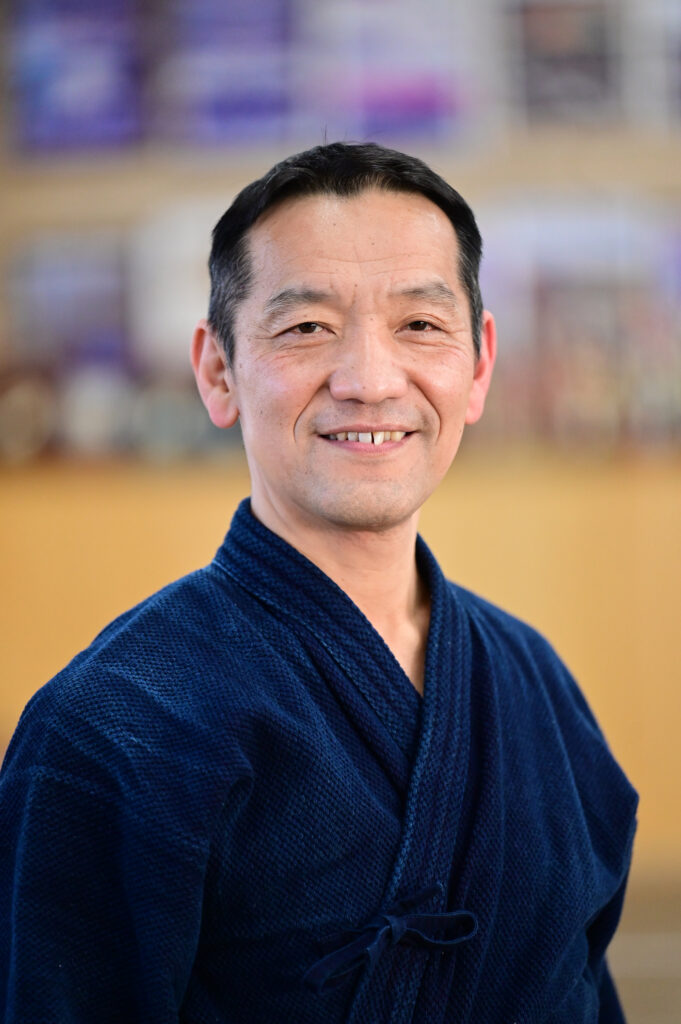
Currently, all sports associated with the Japanese Sports Association have made face masks optional, except for Kendo where it is still mandatory. As a result, many Kenshi now wear special sports face masks. In my research about mask wearing, I measured the biological effect of wearing a sports face mask during physical training on the body.
Research into the effect of wearing a face mask during physical training is being conducted all over the world for other sports, but the results vary. Some research indicates that exercising with a face mask on can cause accidents, whereas other research finds that wearing a face mask does not have a strong physical impact. Furthermore, research so far has targeted different types and shapes of face masks for a variety of sports using a variety of research methods, thus far preventing a unified conclusion on the effect of wearing face masks during exercise. In Kendo, research has been conducted into the effect of mask wearing while practicing Suburi, but the effect of wearing a face mask in the Men has not, so I took this as my area of focus.
The research group consists of Sandan to Yondan university Kenshi who have experience with the basic Kendo routine of Kirikaeshi – Uchikomi – Kakari-geiko – Jigeiko. They practiced this routine in summer with and without face masks, in a Dojo where air conditioning maintained a temperature of 23-24 °C. Their heartbeat was measured during training by a heartrate monitor placed under the Kendogi. They used polyester face masks advertised as sports masks.
First, we measure their resting heart rate while sitting down. Then, they did two rounds of Kirikaeshi, Men – Kote – Do – Tsuki for a 10 strike total, 20 seconds of Kakari-geiko, 3 minutes of Jigeiko and finally took 2 minutes of rest. We measured their heart rate again after performing this routine with and without the sports mask. During the 2 minute rest, we paid attention to how exactly their heart rate decreased.
Comparison of heart rate during Kendo practice with and without sports mask
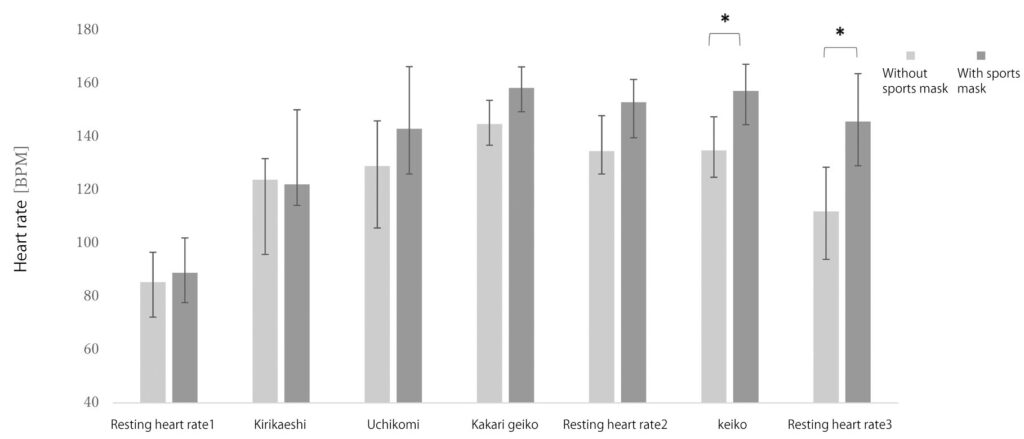
Change in heart rate (BPM average) after full minutes’ rest
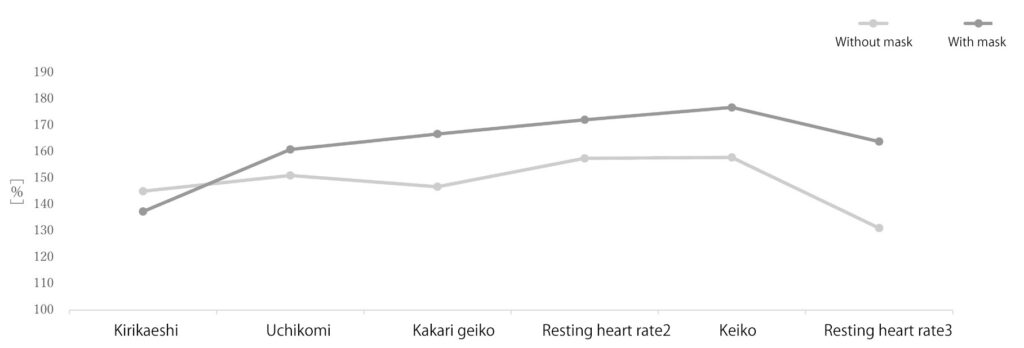
From the above data, we can conclude that heart rate goes up when wearing a face mask, but the difference is not very big and we cannot assume it is connected to any direct danger or harm. Some Kenshi actually already trained with decreased oxygen intake to strengthen their cardiac functions before the COVID-19 crisis. Still, there are some noteworthy results in this data I will explain.
Although there was no big increase in heart rate for strenuous exercises like Uchikomi-geiko and Kakari-geiko compared to resting heart rate, the increase in heart rate for Jigeiko, in which Kenshi do not move as much, was unexpectedly equal or slightly bigger. The presence of a face mask during practice also produced a significant increase in heart rate during the 2 minute rest period (resting rate 3 in the graphs.) The difference in heart rate during Jigeiko could be caused by Kenshi holding their breath as they are setting up the situation, closing in on the opponent and preparing their body to move for Ippon. As the Kenshi then moves to the actual strike they inhale and try to return to their usual state of breathing, but the face mask obstructs airflow and intake of oxygen, causing this difference in heart rate. This may be good to keep in mind during Shiai as well, as Shiai has similar moments of tension and concentration in which you might hold your breath.
Considering the above findings, I think it’s reasonable that the tentative COVID-19 Shiai and Shinpan rules mandate shorter Enchosen and breaks (three 5-minute breaks in the All Japan Championship.) The guidelines for Keiko also recommend that breaks be taken earlier during practice. I think it’s important to take longer and earlier breaks. As heart rate is slow to come down after Jigeiko, it is especially important for older Kenshi to pay attention to any changes to your physical state after Jigeiko. Many Kenshi will convince themselves they are fine and can continue practicing, so it’s necessary for those around them to stop and guide them when needed. In other words, it is important to encourage rest, for example a 10 minute break instead of a 5 minute break.
The rest of this article is only available for Kendo Jidai International subscribers!

